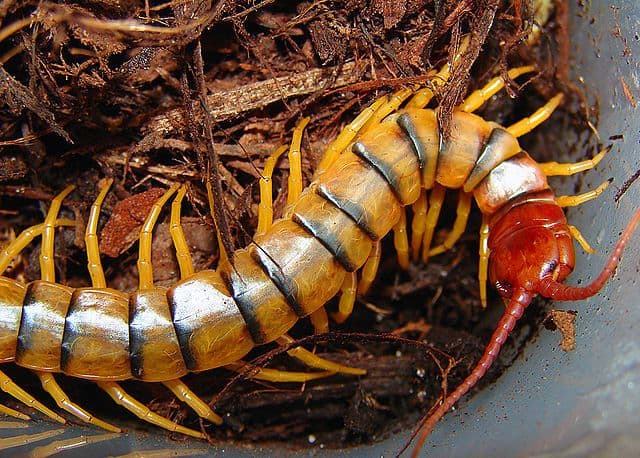Table of Contents
If you are considering a centipede as a pet, you are bound to have questions of, among other things, its eating habits. For example, you will want to know what you should be feeding your new pet, how often you need to feed it, and what to do if it is not eating. You might also want to know what baby centipedes eat to ensure that you keep your new pet happy and healthy.
Feeding a Pet Centipede
Many people are surprised to learn that centipedes are actually carnivorous and eat other insects. In the wild, centipedes have even been known to eat creatures that are up to fifteen times larger than themselves [source
are actually carnivorous and eat other insects. In the wild, centipedes have even been known to eat creatures that are up to fifteen times larger than themselves [source ]. They can do this by injecting a powerful venom via a bite. There have been recorded incidents where some centipedes have managed to devour mice and bats. However, it is more common for these myriapods to eat things such as moths, earwigs, small spiders, crickets, flies, and cockroaches.
]. They can do this by injecting a powerful venom via a bite. There have been recorded incidents where some centipedes have managed to devour mice and bats. However, it is more common for these myriapods to eat things such as moths, earwigs, small spiders, crickets, flies, and cockroaches.
When it comes to a centipede in your care, it is your responsibility to provide live food. This can include mealworms, crickets, and cockroaches, all of which can be purchased online or from a local pet store. If your centipede is large enough, you could even feed it defrosted pinkie mice.
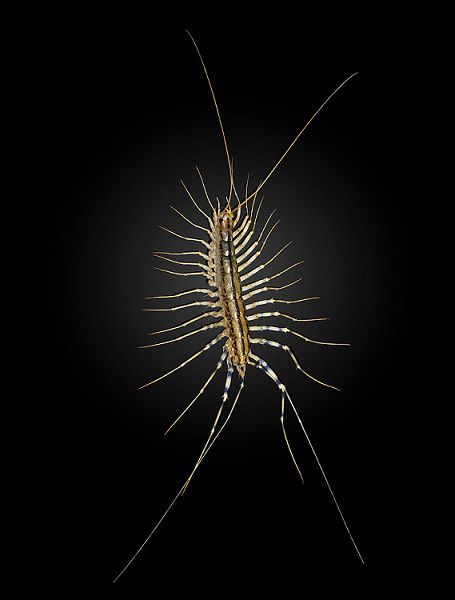
How Often to Feed a Centipede?
Centipedes eat regularly so you will need to offer food at least twice a day. It is best to provide it with different creatures to vary its diet a little, but as a rule, and despite the discussion above, try not to give it live food that is larger than half the size of its body as this could result in injury.
Centipedes are fast and aggressive when hunting for food, so it is important not to place your hands inside the tank when feeding your pet. Doing so could result in a painful bite. It is best to use long handled tweezers or prongs when feeding. At the same time, remove any uneaten food from prior feeds from the tank.
Only feed live food that has been purchased from a reputable supplier and never offer wild insects. The reason is that wild insects can be in contact with pesticides, which could be fatal for your centipede.
In addition to live food, your centipede will also need access to fresh water. Place a shallow dish of water into the tank to allow your centipede to drink when it requires; the water will also contribute to humidity in the tank.
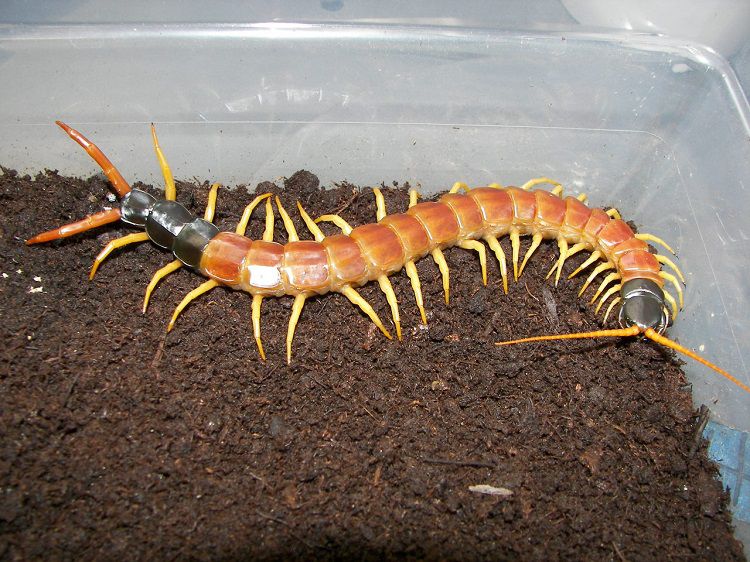
Giant Desert Centipede 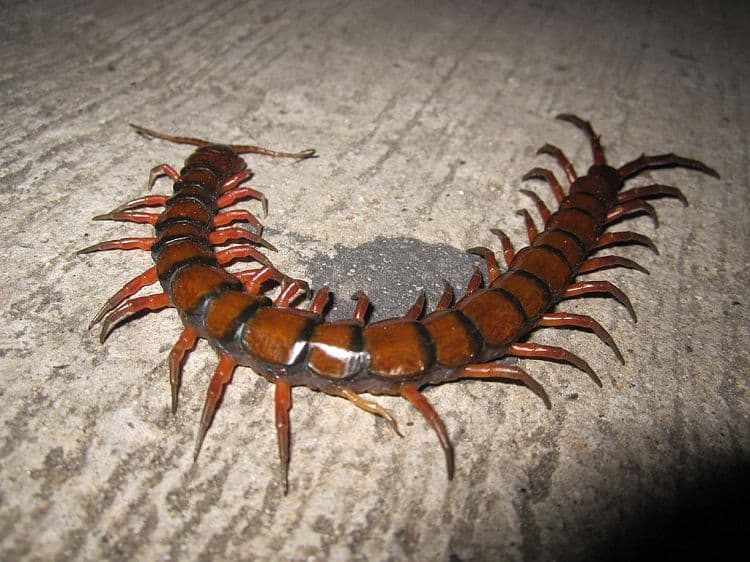
Amazonian Giant Centipede 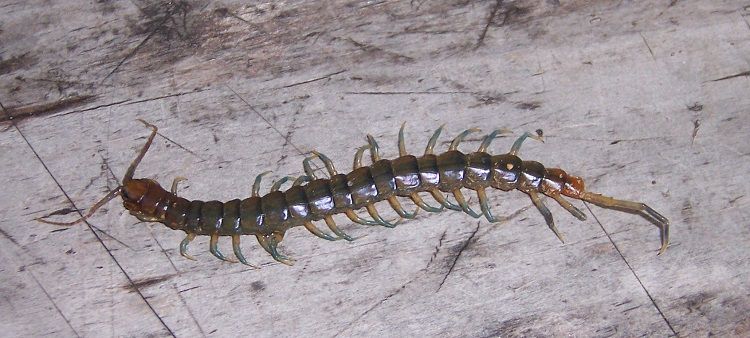
Red-Headed Centipede
What to Feed Baby Centipedes?
Baby centipedes should be fed small insects such as small crickets, fruit flies, and carpet beetle larvae. As they get older, you can then start offering larger foods such as cockroaches, silverfish, and adult crickets.
When baby centipedes first emerge, most keepers offer chopped food that the creatures can scavenge. Try to offer food that is around half the size of the head segment once every day but remember to remove uneaten food before offering more.
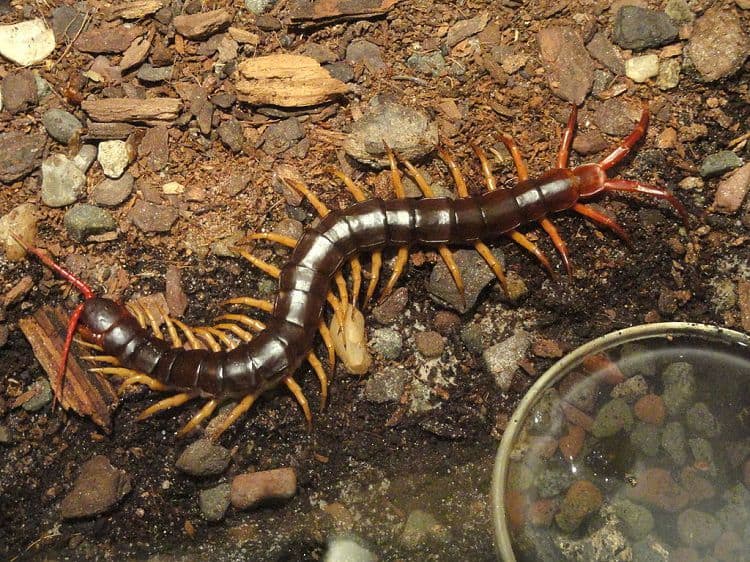
Chinese Red-Headed Centipede 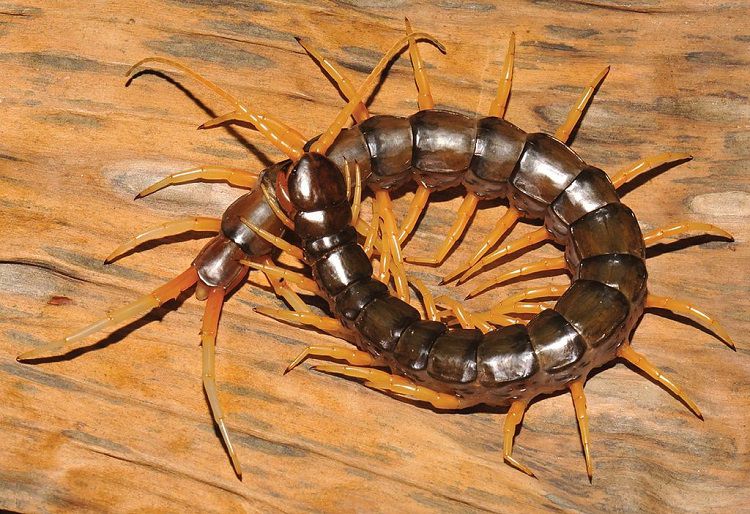
Waterfall Centipede
Why is My Centipede Not Eating?
One question that is often asked by new centipede owners is why their pet is not eating. What most new owners do not realize is that centipedes can go through periods where they are sedentary. It may be that they are about to molt.
In a pre-molt state, most centipedes will stop eating. If your centipede is molting, it is best to avoid placing live food into the enclosure as you run the risk of it injuring your pet.
Centipedes can also become sedentary when the temperatures are cooler. When it is colder, centipedes eat very little and have very little energy as a consequence.
Photo Credits:
- Featured Image (Common Desert Centipede): Matt Reinbold
 – This file is licensed under the Creative Commons
– This file is licensed under the Creative Commons Attribution 2.0 Generic
Attribution 2.0 Generic license.
license. - House Centipede: This file is licensed under the Creative Commons
 Attribution-Share Alike 4.0 International
Attribution-Share Alike 4.0 International license.
license. - Waterfall Centipede: This file is licensed under the Creative Commons
 Attribution 3.0 Unported
Attribution 3.0 Unported license.
license. - Amazonian Giant Centipede: Katka Nemčoková
 – This file is licensed under the Creative Commons
– This file is licensed under the Creative Commons Attribution-Share Alike 3.0 Unported
Attribution-Share Alike 3.0 Unported license.
license. - Giant Desert Centipede: John
 – This file is licensed under the Creative Commons
– This file is licensed under the Creative Commons Attribution 2.0 Generic
Attribution 2.0 Generic license.
license. - Red-Headed Centipede: B. Navez – This file is licensed under the Creative Commons
 Attribution-Share Alike 3.0 Unported
Attribution-Share Alike 3.0 Unported license.
license. - Chinese Red-Headed Centipede: Daderot
 – This file is made available under the Creative Commons
– This file is made available under the Creative Commons CC0 1.0 Universal Public Domain Dedication
CC0 1.0 Universal Public Domain Dedication .
.

